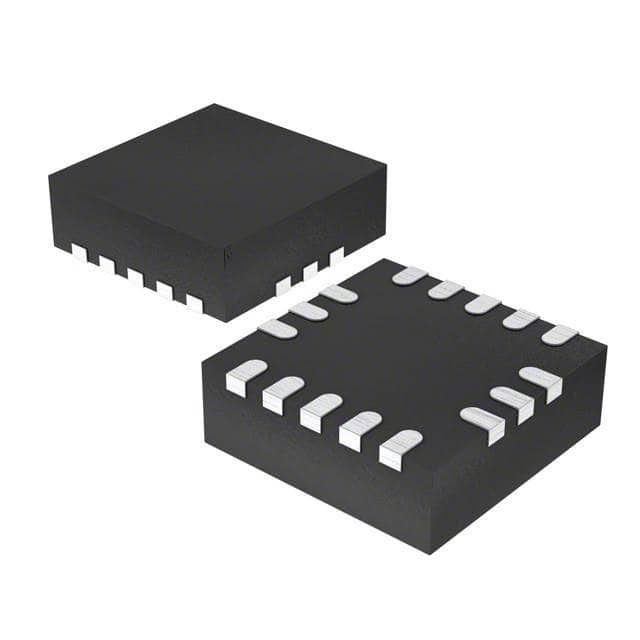Consulte las especificaciones para obtener detalles del producto.

LIS331HH
Product Overview
Belongs to: MEMS motion sensor
Category: Accelerometer
Use: Measures acceleration in three axes
Characteristics: Small, low-power, high-performance
Package: LGA-16L (3x3x1 mm)
Essence: Provides accurate motion sensing
Packaging/Quantity: Typically sold in reels of 2500 units
Specifications
- Operating Voltage: 1.71V to 3.6V
- Sensitivity: 6g/12g/24g selectable full scale
- Output Data Rate: 0.5 Hz to 1 kHz
- Interface: I2C/SPI
Detailed Pin Configuration
- VDD
- GND
- SCL/SDI
- SDA/SDO
- CS
- INT1
- INT2
- ST
- NC
- NC
- NC
- NC
- NC
- NC
- NC
- NC
Functional Features
- Low noise and high stability
- Embedded temperature sensor
- Self-test capability
- Power-down mode
- FIFO buffer for reducing host processor load
Advantages and Disadvantages
Advantages
- High accuracy
- Low power consumption
- Small form factor
- Wide operating voltage range
Disadvantages
- Limited maximum g-force measurement
- Requires external pull-up resistors for I2C interface
Working Principles
The LIS331HH accelerometer operates based on the principles of micro-electromechanical systems (MEMS). It utilizes a suspended mass that moves in response to applied forces, which is then converted into electrical signals for measurement.
Detailed Application Field Plans
The LIS331HH is suitable for various applications including: - Motion-enabled user interfaces in consumer electronics - Gaming and virtual reality systems - Impact detection in automotive safety systems - Industrial equipment monitoring and control
Detailed and Complete Alternative Models
- LIS3DH: Lower power consumption, smaller package
- LIS2HH: Higher maximum g-force measurement, similar performance
This comprehensive entry provides an in-depth understanding of the LIS331HH MEMS motion sensor, covering its product details, specifications, features, advantages, disadvantages, working principles, application field plans, and alternative models.
Enumere 10 preguntas y respuestas comunes relacionadas con la aplicación de LIS331HH en soluciones técnicas
What is LIS331HH?
- LIS331HH is a three-axis linear accelerometer sensor designed for motion-sensing applications.
What are the key features of LIS331HH?
- The key features of LIS331HH include high resolution (16-bit), low power consumption, user-selectable full scales, and I2C/SPI digital output interface.
How is LIS331HH typically used in technical solutions?
- LIS331HH is commonly used in applications such as motion-activated functions in mobile devices, gaming controllers, and industrial equipment monitoring.
What is the operating voltage range of LIS331HH?
- The operating voltage range of LIS331HH is typically between 2.16V and 3.6V.
Can LIS331HH be used for tilt sensing applications?
- Yes, LIS331HH can be utilized for tilt sensing due to its high-resolution output and sensitivity to changes in orientation.
What are the advantages of using LIS331HH in technical solutions?
- Some advantages of using LIS331HH include its small form factor, low power consumption, and high accuracy in motion detection.
Is LIS331HH suitable for battery-powered devices?
- Yes, LIS331HH's low power consumption makes it well-suited for battery-powered devices where energy efficiency is crucial.
What are the typical communication interfaces supported by LIS331HH?
- LIS331HH supports both I2C and SPI digital communication interfaces, providing flexibility for integration into various systems.
Can LIS331HH be used for vibration monitoring applications?
- Yes, LIS331HH can be employed for vibration monitoring due to its ability to detect and measure acceleration in multiple axes.
Are there any specific design considerations when integrating LIS331HH into a technical solution?
- Design considerations for integrating LIS331HH may include proper PCB layout for noise immunity, calibration for accurate motion detection, and selection of appropriate filtering algorithms for data processing.

